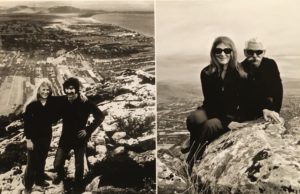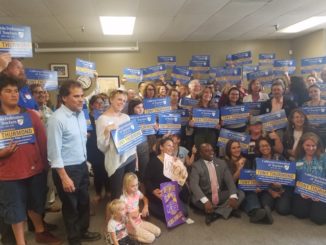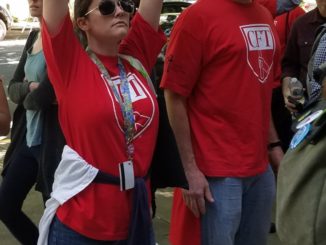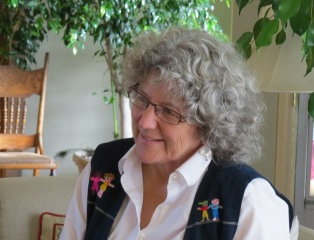
by David Lau
I interviewed Brian Legakis over email for this issue of the newsletter. Brian is retiring this year after many years of dedicated teaching and service at Cabrillo College. He is also the outgoing CCFT historian and member of the CCFT executive board. He will be missed by all his colleagues. We discussed his education, scholarly background, and time at Cabrillo.
David Lau: Could you talk about your personal background and your background as an art historian? Where were you trained and what are some of your research areas as a scholar?

Brian Legakis: Growing up in Berkeley I entered UC Davis in 1964 majoring in Biological Sciences, expecting to enter medical school upon graduation. Like most undergraduates I changed my views about my career goals yet ultimately received a degree in Biology. Experimenting with art history at UCD, I entered graduate school in that field at the University of Chicago in 1968. My emphasis in Art History at the graduate level was Ancient Greek Art and Archaeology. The university was quite generous with scholarships and sent me to Greece to study for two years at the American School of Classical Studies. It was in Athens that I developed my Ph.D. thesis on Athletic Contests in Archaic Greek Art using Greek painted pottery as my sources. These two disciplines were the focus of my research for the early decades of my career.
DL: You worked at Cabrillo as a part-timer for many years before being hired as a full-timer. Could you talk some about your experiences working at Cabrillo in these different but related positions?
BL: When I was hired as a part- timer at Cabrillo in 1987, adjuncts made up a far smaller percentage of the college and enjoyed little political influence. In spite of the low pay and limited opportunities, I did receive considerable respect and appreciation from the full-time faculty and administration. When I was hired as the only contract Art Historian 15 years ago, I learned in greater clarity just how differently full timers were treated. It seemed that despite surviving the onerous gauntlet of the contract search process I and other newly hired full-timers were offered a status that felt strangely like entering an exclusive private club. I was now making a lot more money with a great deal more work and responsibilities, but I was essentially the same person. I made it a point to never forget my time as a part-timer and the plight of adjuncts here at the college.
DL: You’ve also been an anchor for faculty senate and our local union. What has service for the college meant for you?
BL: Many of us enter the college-wide committees with the initial goal of serving as a local representative and communicating the activities of our own divisions and departments. I was no exception. VAPA had suffered from the recession and low enrollment, and I felt a strong obligation to support the division in both the Faculty Senate as well as CCFT. As a by- product Art History received greater recognition on campus. I soon realized that I had a responsibility to further the ideals and political aims of the college adjuncts. In spite of their large numbers, adjuncts needed full-timers to support them. To me this has been a form of social justice, and I have tried to speak passionately on behalf of part- timers here at Cabrillo.
DL: Could you talk about your role as CCFT Historian and some of what it involves?
BL: Maya, our former executive director, wanted to get me on the Executive Board of the union and there was a resignation of the current Historian. I was ushered in before I could refuse and have served in that capacity, as an elder sage, for some time. Elder yes, a sage, not really. Historians traditionally are sought to offer wisdom about Cabrillo traditions and practices. Generally more senior members of the union are selected. At EB meetings I have no designated data reports to provide. I am free to reflect on the issues of the day.
DL: Finally, retirement! What are some plans you have now that you’re retiring?
BL: Sometimes I say to that question that I have a thousand things I want to do. Obviously I will not live long enough to do them all. I will not likely teach again but I will remain an active art historian/Classical archaeologist to the end of my life. I look forward to returning to Cabrillo for cultural performances and events as an emeritus faculty member. My wife and I will travel more than ever to Europe and throughout the Western US. The physical activities of my youth and relative youth will continue as long as I am able: running, cycling, surfing, kayaking, and backpacking. Although I have not formalized my goals for public service, a return to my science background is an area I am researching. I will relish the free time to live out my life without the concern of a school calendar.



